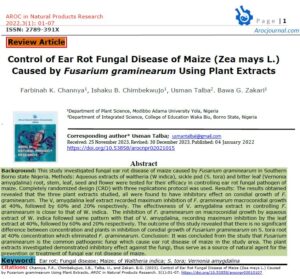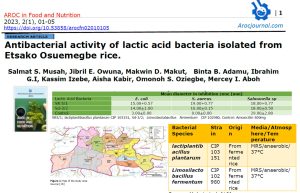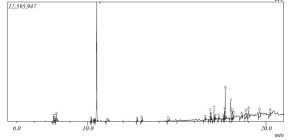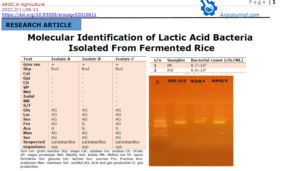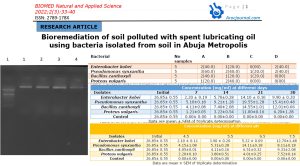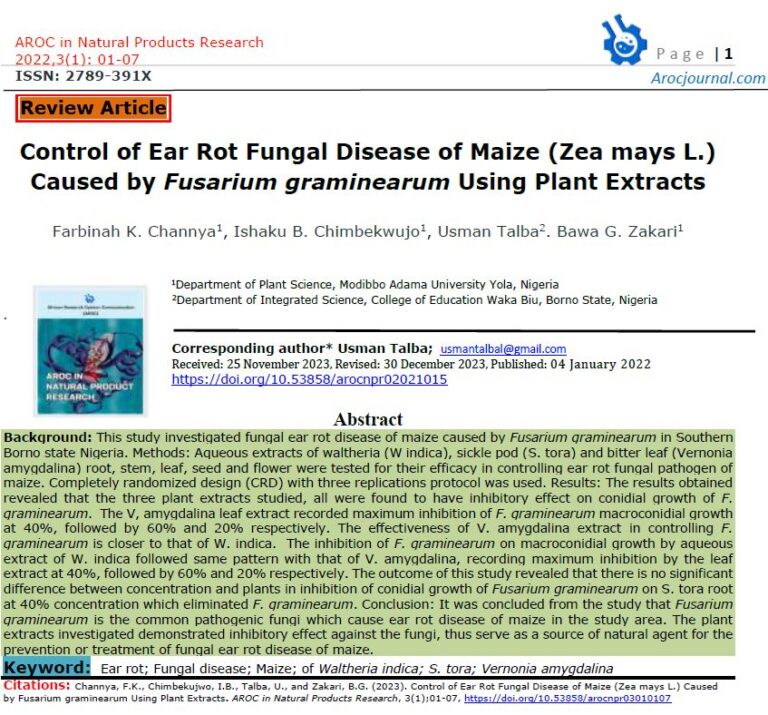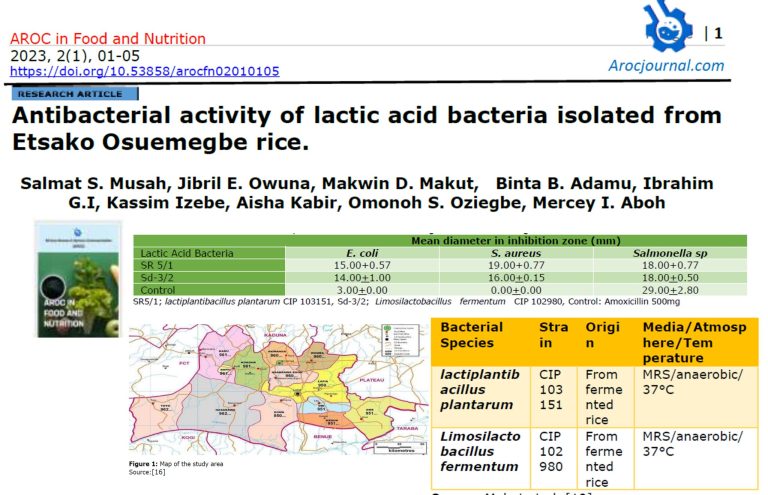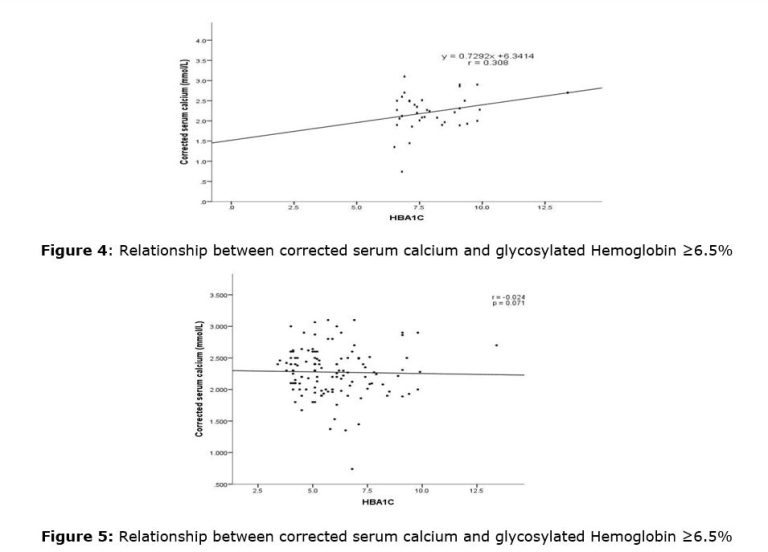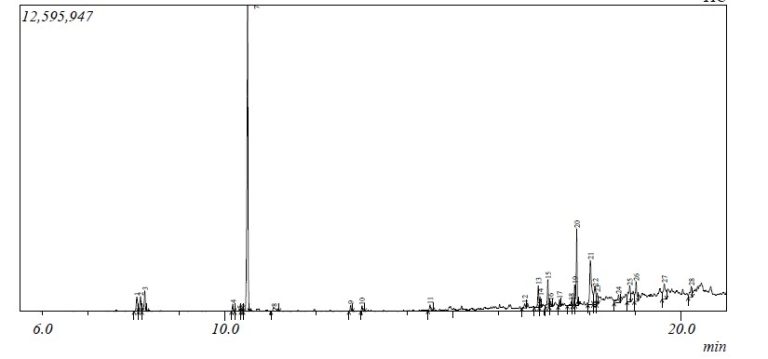- Introduction
The United Kingdom’s forestry commission defines Non-timber forest products as any biological resources found in woodlands except timber and forest harvest (1). Part of the reforesting Scotland project defined non-timber forest products as materials supplied by woodlands except conventional harvest of timber (2). These definitions include wild and managed game, fish and insect. Non-timber forest products in particular highlights forest products which are of value to rural people and communities but have been over looked in the wake of forest management priorities.
Non-timber forest product (NTFPs) also known as non-wood forest product (NWFPs) are useful substance, materials and/or commodities obtained from the forest which do not require harvesting (loggings) trees (3). They include game animal, nuts, seeds, berries, mushrooms, oil, foliage, medicinal plants, fuel wood, fish, peat, spices, and forage (4). The wide varieties of non-timber forest product include fruits, seeds, nuts, oils, bark, wild animal products, mushroom, wrapping leaves, resins and ginseng.
According to (5), research of non-timber forest products focused on three perspectives: non-timber forest products as a commodity with a focus on rural income and markets as an expression of traditional knowledge or as a livelihood option, for rural household needs and as a key component of sustainable forest management and conservation strategies.
These perspectives promote forest products as valuable commodities and important tools that can promote the conservation of forest. In some contexts, the gathering and use of non-timber forest product can be a mechanism for poverty alleviation and local development. In recent decades, interest has grown in the use of non-timber forest products as alternative or supplements to forest management practices (6). In some forest types, under the right political and social conditions, forest can be managed to increase biodiversity and potentially economic diversity (6)
2.0 Methods
2.1 Area of Study
Ago’Owu Forest Reserve located in Ayedaade Local Government Area of Osun State which is one of the thirty (30) Local Government Areas in Osun State. It is found in the rain forest zone and it covers 305.4123 km2. The climate of the study area is of humid tropical type with distinct dry and wet seasons. The wet season begins from mid -March to late October. The rainfall pattern is bimodal with peak periods in July and September. The study area is underlain by metamorphic rocks of the Precambrian Basement Complex with great variation in the rocks structure, mineral composition and grain size (8).
The soils of the area are also moderately to strongly leach. The soils have low to medium humus content, weakly and to neutral surface layers and moderately to strongly acid sub-soils (8). The vegetation is evergreen with such woody trees like Teak (Tectona grandis L.f.) Gmelina (Gmelina arborea (Benth.) Staff), Oganwo (Khaya ivorensis A.Chev.), Ayunre (Albezia zygia (DC.) J.F. Macbr.), Iroko (Milicia excelsa (Welw.) C.C.Berg), etc. The climate of the area is humid tropical, with distinct dry and wet season. There are communities that fall within and around Ago-Owu FR such as; Ajegunle, Mokore, Alabameta, Elewe, Alaguntan, Arinkinkin, Okodowo, Alaadura and many others. Major occupation of the people is farming, although some of them have one or two other occupations combined together such as being a farmer and a trader, a farmer and wood contractor etc. They engaged in cash cropping than food cropping. Some of the cash crop planted are; palm fruit, cocoa and cola nut. Other crops found here are plantain, banana, yam, cassava and the like.
Ago’Owu Forest Reserve is a thick Forest zone and it consists of 32,116 hectares in the high forest area, State and in the east by Ondo State. Agriculture is the traditional occupation of the people of Osun State. The tropical nature of the climate favours the growth of a variety of food and cash crops. The vegetation consists of high forest and derived savanna towards the north. The trees and other living components of the area have been disturbed by annual forest fires and other human activities. Sizeable parts of the old Oyo forest reserve are located in the present Osun State. These include Ago-Owu Forest Reserve with 32,116 hectares in the high forest area, the estimate terrain elevation above sea level is 204 metres
2.2 Sampling Technique
2.2.1 Method of data collection
Primary and secondary data was used for the study. The primary data will be collected with the aid of structured questionnaire. The question was design to identify socio economic impact of Ago-Owu Forest Reserve on the Inhabitance of the study area; identify the human activities carried out by the inhabitance , Investigate the socio economic impact of these activities on the inhabitance of the study area, to assess the management activities that encourage the sustainability of Ago-Owu Forest Reserve, to determine the challenges militating against Sustainable Forest management of the reserve. Purposive sampling was used to select four villages Okodowo, mokore, Ejemu, Ajegunle which are closed to the reserve with projected population 640, 580, 310 and 260 respectively.
Furthermore, (7) was used to select respondents for the study which indicate 10% sampling intensity was used to sample respondents in the study area where the population is less than 500, 5% sampling intensity for population between 500 and 1000 and 2.5% for population above 1000.In view of this, 32 questionnaires in Okodowo, 29 in Mokore, 31 in Ejemu and 24 in Ajegunle making the total of 116 questionnaires were administered in the study area

2.3 Data Analysis
Descriptive statistics tools such as frequencies, mean, modes and percentages were used to analyze the variables of interest such as age, gender, family size, education, income, religion, how they transport products from collection point to sales point and the amount paid to laborers. Budgetary analysis was also employed to determine the profitability of the NTFPs collected. The data collected were subjected to frequency, percentage and profitability analysis.
Gross Margin = Total revenue- Total Marketing cost
Profitability Index = Rate of return on investment
TR- TC/TC*100
GM = TR – TC
TR = Output (Kg) * Price/unit
TC = X1P+ X2P2+ X3P3+—–XNPN
Where X1 = transportation, X2 = laborss (#), X3= Cutlass, X4= Knife, X5 = Basket, P- = Price of Input
3.0 Result and Discussion
Table 1 showed the characteristics of respondents in the study area. A total of 116 questionnaires were administered but 110 was retrieved. It was indicated that 56.4% of the respondents in the study area are male while 43.6% of the respondents were female. This shows that there are more of male than female in the collection of NTFPs in the reserve. This might be due to the fact that women are involved in domestic work while men engage in providing for the family needs. This corroborated the findings of (10) who reported that male resilient to stress management make it possible for them to engage in more tedious work than their female counterpart.
The result of the age distribution revealed that majority (53.6%) of the respondents are within the ages of 41-50 years, this was followed by respondents between the ages of 31-40 years with 29.1% while those between 21-30 are of the least with 8.2%. This is an indication that most of the respondents are within the active group and can still be able to source income in other to sustain livelihood. This is in line with (11,12) when they stated that the highly productive age in agricultural and all forestry activities falls within the age of 31-50. It was further revealed that 63.6% were married while 25.5% were single and 10.9% are divorced. This is an indication that respondents have responsibilities therefore, they source for means of sustaining livelihood. This however supported the findings of (12) who stated that a high percentage of the rural population is married
It was further indicated that most of the respondents (46.4%) had secondary education, this was followed by those with primary education 28.2% while those who had no formal education recorded the least 11.8%. The result on education revealed, that a large percentage of the respondents have basic education at primary and secondary level while some do not have any formal education. Meanwhile, a few percentage of the respondents possess tertiary education. It therefore supported the findings of (12,13) that although education is an engine for development, it is not necessarily needed for the forest dependent communities as their utmost concern is the easy, cheap and readily available farm practice and non-timber forest products gathering in other to sustain livelihood .Table shows the opinion of respondents on the ascertainment of NTFPs collection in the study area was sought and the result revealed that 60.0% of the respondents are aware while 40.4% of the respondents are not. This implies that majority of the respondents depends on collection of NTFPs The table also indicate that 53.6% of the respondents collect the products from the forest reserve while 46.4% collect from free area . This implied that forest reserve are very significant to the livelihood of the rural dwellers. This harmonize the study of (14), who observed that people will use the forest to provide for their need. Finally this table also show the opinion of the respondents on Government permit prior NTFPs collection was sought and the results indicated that 60.9% of them were of the opinion that they usually obtain permission before collection of the products from the Reserve and 39.1% of them submitted that they do not
Table 1: Distribution of Respondents at Ago Owu Forest Reserve.
| VARIABLE | FREQUENCY | PERCENTAGE |
| GENDER | ||
| Male | 62 | 56.4 |
| Female | 48 | 43.6 |
| AGE | ||
| 20-30yrs | 09 | 8.2 |
| 31-40 | 32 | 29.1 |
| 41-50 | 59 | 53.6 |
| 51 Above | 10 | 9.1 |
| MARITAL STATUS | ||
| Single | 28 | 25.5 |
| Married | 70 | 63.6 |
| Divorced | 12 | 10,9 |
| EDUCATIONAL STATUS | ||
| No formal education | 13 | 11.8 |
| Primary education | 31 | 28.2 |
| Secondary education | 51 | 46.4 |
| Tertiary education | 15 | 13.6 |
| RELIGION | ||
| Christianity | 33 | 30.0 |
| Islamic | 62 | 56.4 |
| Traditionalist | 15 | 13.6 |
| OCCUPATION | ||
| Trader | 31 | 28.2 |
| Farmer | 67 | 60.9 |
| Civil Servant | 12 | 10.9 |
| GOVERNMENT PERMIT | ||
| Yes | 67 | 60.9 |
| No | 43 | 39.1 |
| ASCERTAINMENT OF NTPFs COLLECTION | ||
| Yes | 66 | 60 |
| No | 44 | 40 |
| SOURCE OF NTFPs COLLECTION | ||
| Reserved | 59 | 53.6 |
| Free Area | 51 | 46.4 |
Source: field survey 2022
Table 2 revealed the commonly used NTFPs in the study area. The study revealed a total of 6 different NTFPs were commonly sourced from the study area. It was further observed that fuel wood has the highest percentage which accounted for 30.0% followed by mushroom, charcoal, wrapping leaves medicinal plant etc. this is in conformity with (15); (16) who observed in their studies that many of NTFPs are being used by locals for the improvement of their livelihood status, these include leaves, flowers, fruits, branches, gum/resins, roots
Table: 2 commonly sourced NTFPs in the study area
| COMMON NAME | FREQUENCY | PERCENTAGE % |
| Fuel wood | 33 | 30.0% |
| Medicinal plant | 12 | 10.9% |
| Snail | 12 | 10.9% |
| Wrapping leaves | 13 | 11.8% |
| Charcoal | 14 | 12.7% |
| Mushroom | 26 | 23.6% |
Source: field survey 2022
Table 3 shows the most common Non-timber Forest Product in the study area. It shows that fuel Wood is the most prioritized having 30.0% followed by Mushroom with 23.6%, charcoal with 12.7% and Wrapping leaves having 11.8% while Medicinal plant and snail are the least with 10.9% each.
Table 3: Most used NTFPs in the study area
| COMMON NAME | PERCENTAGE % |
| Fuel wood | 30.0% |
| Medicinal plant | 10.9% |
| Snail | 10.9% |
| Wrapping leaves | 11.8% |
| Charcoal | 12.7% |
| Mushroom | 23.6% |
| Total | 100.0% |
Source: field survey 2022
The table above shows the budgetary analysis of the NTFPS collected in Ago-Owu Forest Reserve. The total variable cost for the products are ,(mushroom) ₦6,477.92,(charcoal) ₦5,881.78, ( Snail) ₦4,081.74 (fuel-wood) ₦8,076.00, (medicinal plant) ₦4,299.28 (wrapping leaves) ₦318.65.The total fixed cost were ₦731.75, ₦424.14, ₦653.,,89, ₦502.00,₦77.86 , ₦653.90. The total revenue realized were ₦20,871.20, ₦25,070.18, ₦15,631.25 ₦30,751.43 ₦16,793.48 ₦6,062.71. The net profit are ₦13,661.53 ₦16,570.04 ₦10,675.08 ₦24,367.65 ₦12,633.90 ₦5,090.16. Its shows that charcoal had the highest net profit (₦24,367.65) among the NTFPs in the study area. The rate of return is as follows mushroom (2.89%), charcoal(4.82%), snail (4.04%), fuel-wood(2.95%), medicinal plant(3.16%), wrapping leaves (6.54%).This results indicates that for every naira invested (also known as return to capital) was high in the study area.1-₦7 was realized and the rates of return follow the same trend. On the basis of this the collection of NTFPs were more profitable in Ago-Owu forest Reserve
Table 4. Cost and returns to non-timber forest products
| Products | Mushroom | Fuelwood | Medicinal plant | Charcoal | Snail | Wrapping leaves |
| Av.Qty.coll (#) | 20871.20 | 25070.18 | 15631.25 | 30751.43 | 16793.48 | 6064.71 |
| Av.qty.sold (#) | 30531.59 | 27894.1 | 19923.81 | 32842.75 | 19244.90 | 12211.00 |
| Av.Labour cost (#) | 5478.95 | 4519.38 | 3478.78 | 54669.43 | 2246.82 | 198.50 |
| Av. transport cost | 998.97 | 3556.62 | 820.50 | 412.35 | 1834.92 | 120.15 |
| Total variable cost (#) | 6477.92 | 8076.0 | 4299.28 | 5881.78 | 4081.74 | 318.65 |
| Av. cost for basket (#) | 80.63 | 0 | 80.63 | 0 | 0 | 80.63 |
| Av. cost of Cutlass (#) | 424.14 | 424.14 | 424.14 | 424.14 | 0 | 424.14 |
| Av. cost of bag (#) | 77.86 | 0 | 0 | 77.86 | 77.86 | 0 |
| Av. Cost of knife () | 149.12 | 0 | 149.12 | 0 | 0 | 149.12 |
| Total Fixed Cost (#) | 731.75 | 424.14 | 653.89 | 502.00 | 77.86 | 653.90 |
| Total cost (#) | 7209.67 | 8500.14 | 4953.17 | 6383.78 | 4159.58 | 972.55 |
| Total revenue (#) | 20871.20 | 25070.18 | 15631.25 | 30751.43 | 16793.48 | 6062.71 |
| Gross Margin (W) | 14393.28 | 16994.18 | 11331.97 | 24869.65 | 12711.74 | 5744.06 |
| Net Profit | 13661.53 | 16570.04 | 10675.08 | 24367.65 | 12633.90 | 5090.16 |
| Profitability index | 2.89 | 2.95 | 3.16 | 4.82 | 4.04 | 6.54 |
Source: field survey 2022
Table 5; shows the various impact of NTFPs in the study area. The study revealed that 65.5% of the respondents consume the products while 34.5% submitted that they do not consume and at the same time generate income. This is in harmony with (17) who argued that, the importance of forest and farm tree resources with regards to the household’s food security is based on the understanding that these resources serve as supplement to existing food resources.
Study on the impact of NTFPs on food production revealed that almost all respondents 65.5% in the study area benefits from the products in terms of food. This study is in conformity with (18) who observed that not only NTFPs are important to household food security as a widely consumed as food but also important in a nutritional point of view because many foods are mixed by some NTFPs including wild vegetables with cereals when cooked to improve nutrition and increase quality of food per meal.
Opinion of the respondents on whether medicinal plants serve as an alternative to orthodox medicines were sought and the results showed that 70.0% of them agreed with this and in fact few percentages 30.0% even disclose that they depend on both Medicines for their treatment when they are ill, but preferably they go for Orthodox medicine. This harmonize the findings of (19) who reported that plants from forests have significant proportion of the medicine value that can be useful to surrounding population. Data on source of income generation indicated that all respondents 100.0% generate income from NTFPs collection. This implies that NTFPs collection in the study area contribute to income generation. This is in tandem with (20) who observed that NTFPs contributes about 13% to household income. Finally, the study showed that fuel wood usages is equal to 62.7% which implies that more than half of the respondents in the study area rely mostly on this products. In addition, the high level of consumption of fuel wood in the study With the findings of (21) who observed that 90% of the people of Africa relies upon fuel wood as energy source.
Table 5: Impact of NTFPs collection on the livelihood of the Forest Dweller
| S/N | Impact of NTFPs Collection on the Livelihood | Yes | NO |
| 1 | Consumption of the product collected | 72(65.5%) | 38(34.5%) |
| 2 | Impact of NTFPs on food production | 72(65.5%) | 38(34.5%) |
| 3 | Medicinal plant alternative | 77(70.0%) | 33(30.0%) |
| 4 | Source of income | 110(100.0) | 0(00.0%) |
| 5 | Fuel wood consumption | 69(62.7%) | 37(37.3%) |
Note: percentage in parenthesis
Table 6 shows the factors responsible for the inadequate supply of NTFPs in the study where climate change , lack of finances for smooth running of the various activities involved in the products and price Fluctuation of the products, also inadequate processing facilities, transportation, inadequate storage facility. Hence, it clearly indicated that the factors that mostly likely influence the supply of NTFPs in the study area. The implication was corroborated by (22); (23) that the existence of this factor possess serious disadvantages to adequate supply of NTFPs in the study area.
Table 6: constraint facing the supply of NTFPs in the study area
| S/N | Independent variable | YES | NO |
| 1 | climate change | 76(69.1%) | 34(30.9%) |
| 2 | Finances | 81(73.6%) | 29(26.4%) |
| 3 | Adequate processing facilities | 24(21.8%) | 86(78.2%) |
| 4 | Forest law | 72(65.5%) | 38(34.5%) |
| 5 | Transportation | 74(67.3%) | 36(32.7%) |
| 6 | Road network | 78(70.9%) | 32(29.1%) |
| 7 | Adequate storage facility | 39(35.5%) | 71(64.5%) |
| 8 | price fluctuation | 71(64.5%) | 39(35.5%) |
4.0 Conclusion
The study established the fact that Ago-Owu forest reserve is highly sufficient to the livelihood of people living in and around the reserve, since most of the NTFPs collected as sourced from there. The study also revealed the huge potential of the reserve in terms of diverse NTFPs production which are notable for high economic value. Constraints facing the supply of NTFPs in the study area where climate change, lack of finance for smooth running of various activities involved in the products’ supply and price fluctuation.
Acknowledgement: The authors acknowledge Federal college of Forestry Jericho and the entire staff and management for providing enabling environment for this research to be able to carry it out within the stipulated time.
Authors Contribution: This work was carried out in collaboration of all authors. All authors participated in study design, analysis, and manuscript preparation. All the authors read and approved the final manuscript.
Conflict of Interest: The author declared that no conflict of interest exists.
REFFERENCE
- Jones, Eric T. Rebecca J. M. C Lain and James Weigand (2002) Non-timber Forest Products
- Mohammed, Gina H. (2011) The Canadian NTFPs business companion: Idea, Techniques Munich Personal REPEC Journal Archive http:/mpra.ub.unimuchen.de/2689/mpra Mxay, province, M.Sc. Dissertation, Faculty of Graduate school University of the Paper No 2689, Pp 1- 17
- FAO. (2018) Non wood forest Products and services for rural income and sustainable Forest-Based Income Opportunities. Paper presented at the Natural Resources Forestry. FAO, Rome, Italy.
- Emery, Maria and Rebecca J.Mclain (2001) Non timber forest products: Medicinal herbs,
- Thomas, M.G and D.G. Schumann. (1993) Income opportunities in special Forest Valuing and managed Mediterranean Forest Ecosystem for Non-Timber Goods Washington, DC.
- Martinez-Rodriguez A.J (2002) Influence of the yeast strain on the changes of the amino acids, peptides and proteins during sparkling wine production by the traditional method .J Ind Microbiol Biotechnol 29(6): 314-22
- Diaw K, Blay D. and Adu-Anning C. (2002) Socio-Economic Survey of Forestry Fringe Communities: Krokosua Hills Forest Reserve. A report submitted to the Forestry Commission of Ghana Pg 86.
- Birner, A.E. and Allison F. E., (2006): Extension service in Africa. Journal of Agriculture, 202 (3-4:269-278)
- Salawu A.S. (2001).Negation in Ekiti YORUBA. A Journal of Yoruba Studies Association of Nigeria,2,102-119
- Taiye O. Babatunde1 Bridget E. Olawuyi , Oluyemisi O. Babatunde , Olajumoke C. Odeyale, Kehinde O. Babatunde and Toyin S. Akinbosoye (2022) Marketing of non-timber forest products as a means of income generation in Oja-oba market, Iseyin local government area, Oyo State AROC in Agriculture 2022,1(1);33-40
- Jibowo, A. A. (2000): Essentials of Rural Sociology,Gbemi Sodipo Press, Abeokuta, Nigeria. And impression pp 229-236
- Awe F, Idumah F.O.,Imoagene E, Eniola T.S (2009), Socio-economis Characteristic and Rural Household’s perception about the consumption of grasscutter (Thryonomy swinderianus) meat in selected LGAs of Kogi State J. Agric for Social Sci., 7(1):124-233
- Zugman I.C.Z.1995.Exports fuel fast growth of Brazil’s pulpwood Technology Freeman publications-SKOKIEL May 1995:41-12pp
- Lynch, O.J and Talbott K, 1995. Balancing acts:community-based forest management and national law in Asia and the Pacific. Washington DC, WRI.
- Kumar J, Patet K, Kumar R., 2011. Forest structure, diversity and soil properties in a dry tropical forest in Rajasthan, Western India. Ann. For.Res.54:89-98.
- Kessy,J.F (1998) Conservation and Utilization of Natural Resources in the East Usambara Forest Reserves: Conventional Views and Local Perspectives, Tropical Forest Management Paper No.18 Wageningen.
- Ishengoma, R C and Y.M. Ngaga, 2000. Woodfuel consumption in selected urban centres of Tanzania. Draft report. Mimistry of Natural Resources and Tourism, Dar es Salaam, pp148.
- Deeks J 1996. Swots corner: what is an odd ratio? Bandolier Books. 33(25); 6-7
- Bland JM & Altman DG 2000. The odd ratio. Brithish medical Journal ,230:1468
- Adepoju A.A. and Salawu A.S (2007) Economics valuation of NTFPs and resources for small business in Non-timber forest Products and services. Candlenut and Services. 57;57-91
- Bonet, Jose-Antonio, Oliach, Danial, Fisher, Christine, Olivera, Antoni, Martinez de Aragon, books sault stemarie, ontatio
- Chanthalangsy, N, (2009) Gender roles in utilization of NTFPs in Namo villages, Oudo
- FAO. (1997). State of the world’s forest 1997. FAO, Rome, ItaProduct press: Binghamton, New York.

